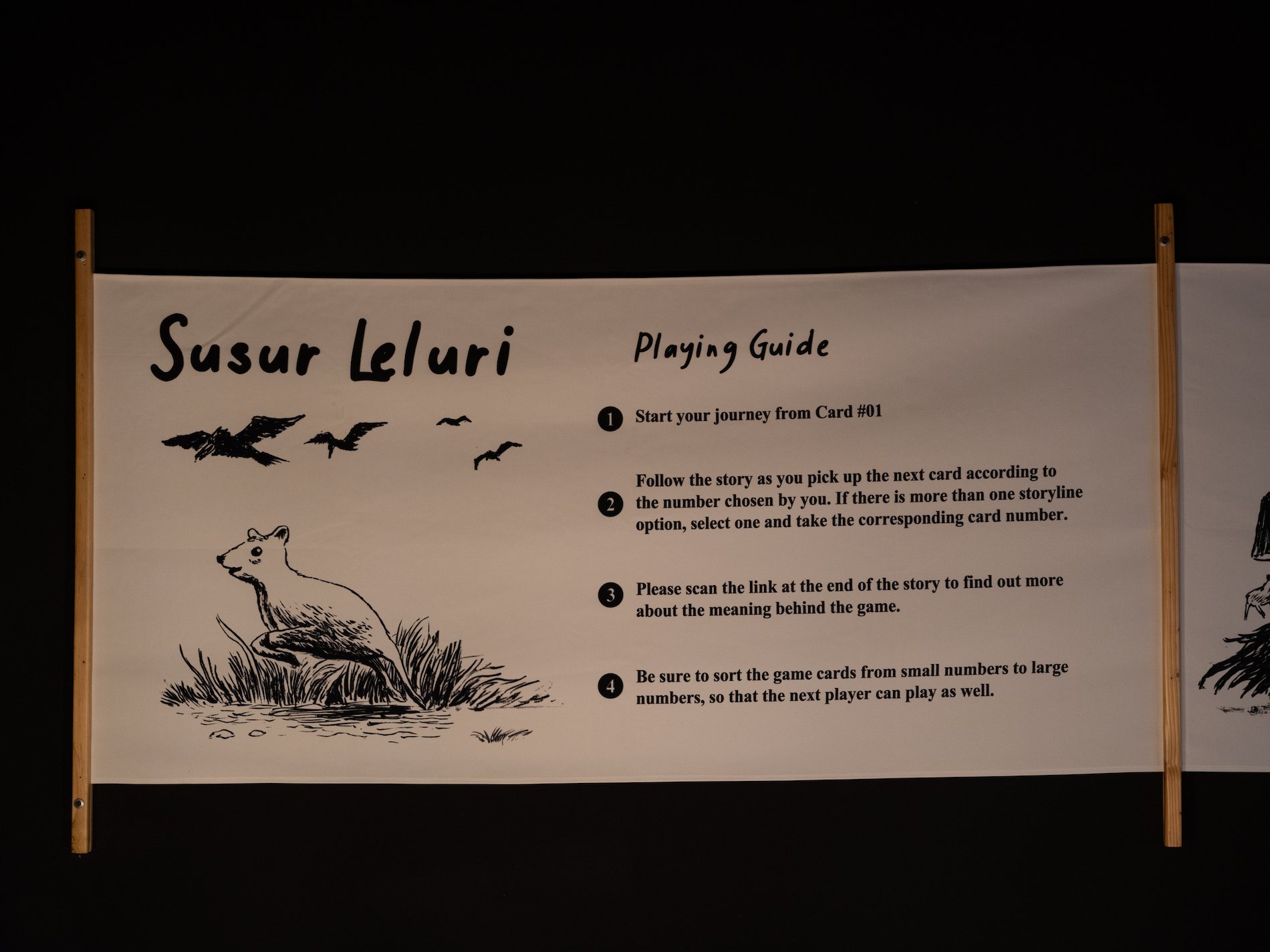Maharani Mancanagara
‘Hikayat Wanatentrem’ and ‘Testimonial Object’
By Ian Tee
Maharani Mancanagara, ‘Susur Leluri’, 2018, installation view in Sharjah Biennial 15 (2022). Image courtesy of Sharjah Art Foundation.
Maharani Mancanagara is a Bandung-based artist whose practice explores Indonesia’s modern socio-political and cultural history. She graduated from the Institute of Technology in Bandung (ITB) with a Bachelors in Fine Art, majoring in print-making. This background can be seen in her charcoal drawings on wood and installations which incorporate the aesthetics of etching as well as elements of reproduction. Even though the subjects addressed in Maharani’s works are often challenging, a sense of warmth always comes through in her choice of materials and treatments.
Maharani Mancanagara, ‘Hikayat Wanatentrem’ (detail), 2018, installation view in Sharjah Biennial 15 (2022). Image courtesy of Sharjah Art Foundation.
Maharani Mancanagara, ‘Hikayat Wanatentrem’, 2018, installation view in ‘Letter - Callus - Post War’ (2019) at Kuandu Museum of Fine Arts, Taipei, Taiwan. Image courtesy of the artist.
A key piece in Maharani’s body of work is ‘Hikayat Wanatentrem’ (2018), an ambitious installation that speaks to the 1965 mass killings in Indonesia. The artist weaves an allegorical tale based on various narratives on the lives of political prisoners who were deported to Pulau Buru in the 1960s and 1970s, including those from her grandfather’s diaries. Told from the survivor’s perspective, the story follows the mouse deer Cikal in a journey of discovering his ancestral past and a conflict that happened in the forest he lives in.
The project unfolds across various formats, such as wall drawings, storybooks, as well as an interactive installation where the audience’s choices will determine one of three possible outcomes for the story of Cikal. In taking the form of an accessible card game which is suitable for all ages, Maharani underscores the many choices made in shaping the interpretation of history. It is a subtle approach taken to address a dark episode that has polarised Indonesian society.
Maharani Mancanagara, ‘Lip Lap #8’, 2023, charcoal on wood, 100 x 130 x 4cm (in configuration). Image courtesy of the artist and Warin Lab Contemporary.
Maharani’s latest solo presentation ‘Testimonial Object’ (2023) considers the histories witnessed by objects and their ownership shifts the stories we tell about them. Each work in the ‘Lip Lap’ series (2023) is composed of multiple items rendered in charcoal on wood. They include artefacts found in the National Museum of Indonesia’s collection, as well as commonplace household items such as clothing hangers and umbrellas. In creating these objects with the same materials and grouping them in her cabinet of curiosities, Maharani displaces the class hierarchy afforded to objects that are deemed to be worthy of the national collection. Instead, she insists that the quotidian and the grassroots have a place within one’s national heritage too. Set against the larger discourse of repatriating objects back to Indonesia from Dutch collections, Maharani highlights the need to also question the perspectives that constitute populist narratives of nationhood.
Click here to read our dialogue with Maharani Mancanagara, where she speaks about how her formative experiences in Bandung and family history shaped her practice.

















